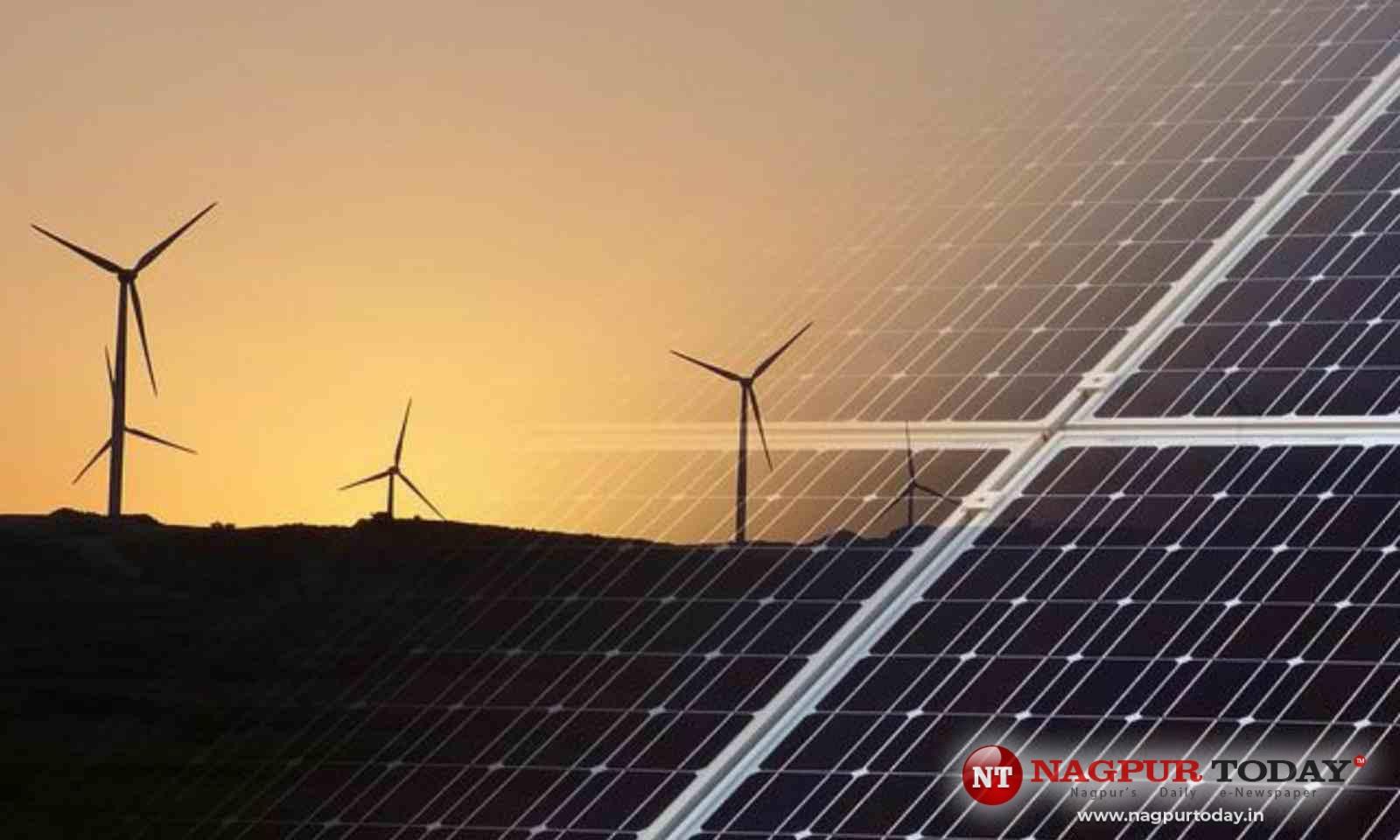Mumbai: A latest study by researchers at Pune’s Indian Institute of Tropical Meteorology (IITM) poses an interesting question for Maharashtra’s push for renewable energy – amongst many other areas and aspects of our everyday lives: climate change is set to impact India’s solar and wind energy potential over the next five decades.
Maharashtra currently ranks among the top states in terms of installed renewable energy capacity (10.78 GW) with Wind power capacity of 5.01 GW and solar power capacity of 2.75 GW contributing the most, that includes being second on the race on decentralised renewable energy (DRE). As of 30th June 2022, renewable energy contributes 24.36% percentage to Maharashtra’s power mix.
This has prompted the state to launch an ambitious initiative to build new solar plants throughout districts to produce 12 gigawatt (GW) of renewable energy over the course of the next six years with the goal of increasing the amount of available power and lowering power purchase costs in the future. Meanwhile the state also accounts for 15% of the country’s wind energy potential.
This latest study titled ‘Analysis of future wind and solar potential over India using climate models’ has been published in the peer-reviewed journal Current Science recently and has been authored by TS Anandh, Deepa Gopalakrihsnan and Parthasarathi Mukhopadhyay, researchers from IITM Pune under the Ministry of Earth Sciences as well as Centre For Prototype Climate Modelling, New York University, Abu Dhabi, UAE.
Researchers carried out the study by using various state of the art climate models, devised by the Intergovernmental Panel on Climate Change (IPCC),to analyse the wind and solar projections for the renewable energy sector over the Indian subcontinent for the immediate future (next 40 years).
“Our industry must adapt to the changing climate, and our technologies must keep pace. Such predictions should not be taken as facts, but as possibilities. The efficiency of renewable energy may be impacted by climate change in Maharashtra and the neighbouring areas. The study emphasises the importance of being prepared for scenarios of this kind and addressing it ,” said Mukhopadhyay.
According to the state’s Unconventional Energy Generation Policy, which the government unveiled in January 2021, Maharashtra intends to continue on its leadership track and generate 40% of its electricity from renewable sources, by 2030. The state experiences 250 to 300 days of bright sunshine annually thus on an average it witnesses up to four to six kilowatt hour (kWh) per square metre.
“Our study of projections in terms of impact on renewably powered sources presents the classic case of challenges and opportunities in Maharashtra. The projections of solar energy potential for the future over western and central India including Maharashtra as well as its adjoining states like Madhya Pradesh, Chhattisgarh and others shows a strong negative trend in the immediate future and thus builds the need therefore to prepare better around it becomes important,” said Mukhopadhyay, adding that this decrease in potential is projected throughout the year irrespective of the seasons.
Between 2016 and 2021, the installed solar capacity of Maharashtra has increased by 614% from 385.76 MW in 2016 to 2753.30 MW in 2022, according to the Ministry of New and Renewable Energy (MNRE). The state’s Unconventional Energy Generation Policy seeks to implement 17.36 GW of transmission system-connected renewable power projects by 2025, including 12.93 GW of solar projects including 2 GW of grid-connected rooftop solar projects.
The researchers of the latest study also said that in the case of wind potential, Maharashtra and surrounding regions show a positive trend in most of the climate models. “The monsoon months are projected to be more windy and cloudy in the coming years. This region also records positive potential in the future but it is not to the same extent as the rest of central India,” added Mukhopadhyay.
Maharashtra has a reasonable wind potential of roughly 45 GW and 100 GW at 100m and 120m, respectively. Maharashtra is one of the seven windy states in India. The main markets for wind-based energy continue to be Maharashtra, Tamil Nadu, Gujarat, and Karnataka. The four states account for roughly 72% of all additions.
The forecasts for the future are important since on August 3, India published a new set of Nationally Determined Contributions (NDCs) for the international fight against climate change. According to the updated NDCs to the United Nations Framework Convention on Climate Change (UNFCCC), India has set out on a mission to meet up to 50% of its energy needs from renewable sources by 2030. Prime Minister Narendra Modi promised to increase the nation’s renewable energy capacity to 500 GW during the COP26 conference in Glasgow last November, with 300 GW coming from the growth of solar energy plants.
STUDY HIGHLIGHTED IN PARLIAMENT, UNION MINISTER RESPONDS
On August 2, 2022, the Union Ministry of New and Renewable Energy was questioned in Parliament (Rajya Sabha) regarding the research study by IITM Pune titled “Analysis of future wind and solar potential over India using climate models,” which says that changing climate patterns are likely to reduce the generation of solar power in the country and also affect the major wind power plants in certain regions; and if so, what were the measures being taken to improve the efficiency of solar farms and wind power plants?
RK Singh, the Union Minister for MNRE & Power, said that the government was taking the following actions to raise the effectiveness of wind and solar power facilities:
● MNRE is funding research and development under the “Renewable Energy Research & Technology Development Program” in a variety of areas, including enhancing solar cell efficiency, resource assessment, precise forecasting techniques, raising hub heights for wind turbines, and making larger rotor blades.
● Implementing the “National Program on High Efficiency Solar PV Modules” production-linked incentive programme to stimulate the production of high-efficiency solar PV modules.
INDEPENDENT QUOTE
Dr. Anjal Prakash, Research Director and Adjunct Associate Professor with the Bharti Institute of Public Policy at the Indian School of Business (ISB) and Lead Author of two distinct IPCC Reports (released between 2020 and 2022):
“This is a very important study done by Scientists which shows the future potential of solar and wind energy. The problem is that presently, India has not fully utilized its potential to harness renewable energy – solar and wind. This study shows future projections and can be very handy for policy and business decisions. However, I would like to point out that the interesting challenge is to have decentralized harnessing of both solar and wind energy. A programme such as solar could go to each household where everyone who has potential, can contribute to this process. There are subsidies available but despite that, households are not able to install solar systems due to various policy and administrative hurdles. The ministry of new and renewable energy may take note of these and create an ecosystem where interested individuals find it easy to install solar and wind energy units without many hassles. Here the role of entrepreneurs is very important which could be strengthened.”















